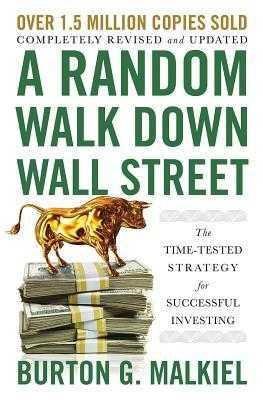Explore the World's Best Ideas
Join today and uncover 100+ curated journeys from 50+ topics. Unlock access to our mobile app with extensive features.
The Need To Invest
If there is inflation of 2% every year, that means that you need at least a 2% return on your capital to maintain your real purchasing power. If you get no return by leaving your money in an account with no interest, your money is becoming less valuable over time. So you need an investment strategy that, at the very least, keeps up with inflation.
218
4.32K reads
The Two Investment Theories
The firm foundation theory: companies have an intrinsic value. They valued based on the net present value of their current and future cash flows. This is the theory Buffett and Munger have used to build Berkshire Hathaway.
Castle in the sky theory: companies have psychological value. Their value is about how others perceive their value. This theory is purported by Keynes. It’s also exhibited by the many periods of “irrational exuberance” that we’ve been through in history.
199
2.99K reads
Finances Bubbles
The many financial bubbles (periods of irrational exuberance) demonstrate how asset bubbles continue to form throughout time.
- Blue chip company booms of the 1970s
- 1980s biotech craze
- Japan in the 80s/90s
- 2000s dot com bubble
There are new technologies, business opportunities, or unique valuation criteria that lead to positive feedback loops that drive stock prices through the roof. Then there’s a 50-90% crash.
182
2.42K reads
Castle in the Sky Theory
People in this camp believe that there are times to buy/sell stocks based on their price movements. This theory suggests that stock values are roughly 90% psychological, and 10% rational. These people are often traders, rather than long-term investors.
Two important assumptions for this theory: all news is priced into stocks, and stocks move in trends.
188
2.2K reads
Fundamental Analysis
Fundamentalists select stocks based on a firm foundation of estimated intrinsic value.
This theory suggests that stock values are roughly 90% rational and 10% psychological.
Stocks increase in value with four signals:
- Expected growth rate (P/E signal of this)
- Expected dividend payout
- Degree of risk
- Level of market interest rates
193
1.93K reads
Efficient Market Hypothesis: The Rational Approach
- Buy companies with average expected earnings growth for 5+ years
- Never pay more than foundation of value
- Look for good stories of growth
The problem is that no one can reliably assess value. There are many factors for that, so the firm foundation theory does not work reliably. Technical and fundamental analysis don’t work, and all information is already priced into the market.
179
1.65K reads
Investing Risk
The probability that a security will decrease in value. The greater the risk, the greater the variance. Risk is the variance in the standard deviation of returns.
- Beta is systematic or market risk – it measures how a stock moves with the overall market.
- Unsystematic risk – risk associated with a particular company
- Diversification cannot eliminate systemic risk, but it can reduce unsystematic risk.
178
1.39K reads
Modern Portfolio Theory
Diversification leads to good returns with lower risk. It works when you have assets that are not perfectly correlated. For example, foreign stocks are not perfectly correlated with domestic stocks, so adding them to your portfolio can lower risk while maintaining good returns. Assets have become increasingly correlated in recent years, but as long as they are not perfectly correlated, portfolio theory is still helpful.
182
1.19K reads
Incentives to Understand
Securities analysts have a heavy bias toward “buy ratings.” Something like 10:1, and it even got to 100:1 during the dot com bubble.
- Analysts work at banks that have corporate clients that would get pissed with a low rating. So incentives are aligned to favor buy ratings.
- Markets can be irrational, but true value is always recognized. Market is a weighing, not a voting machine.
- Investors are emotional – greedy, gambling, hope, fear – they’re not immune to this.
171
1.03K reads
Behavioral Finance
The efficient market hypothesis is built on the idea that investors are rational. Rational investors are individuals who make decisions that maximize their wealth, but are constrained by their individual risk tolerance.
Behavioral finance questions the idea of the rational investors, highlighting that there are at least four factors causing irrational investor behavior:
- Overconfidence
- Biased Judgments
- Herd Mentality
- Loss Aversion
178
907 reads
Overconfidence
Investors are overconfident about their beliefs/abilities and over optimistic about their assessments of the future. Investors also tend to overestimate their own skill and deny the role of chance in their outcomes. Most investors are too precise in their confidence intervals.
Typically, investors attribute good outcomes to their own abilities (hindsight bias). They also attribute bad outcomes to external events.
One manifestation of overconfidence is the consistent overvaluing of growth stocks.
171
788 reads
Biased Judgments
Investors have a number of mechanisms that cause them to assume a greater degree of control than they have in reality. Most investors fail to properly weight probability and use base rates.
168
849 reads
Herd Mentality
There is nothing so disturbing to one’s well-being and judgment as to see a friend get rich.
We all get lured into tales of people making money through investing and of the hot new stock that we need to invest in. This tendency to get swept up in speculative, get-rich-quick schemes is representative of how we get lost in herd mentality when making investment decisions.
172
750 reads
Loss Aversion
Losses hurt more than the joy we receive from equivalent gains. The pain we feel with a $100 loss is about the same as the joy we get from a $250 gain. Loss aversion explains why so many investors sell the winners and hold on to the losers. Especially when we face a sure loss, we will hold on to losers for even longer.
Even if market participants are irrational, it doesn’t mean the market is not efficient. That’s highlighted by the difficulty of consistently finding arbitrage opportunities in the market.
173
713 reads
How to Avoid the Pitfalls of Investor Irrationality
What is hard to avoid is the alluring temptation to throw your money away on short, get-rich-quick speculative binges.
- Avoid herd behavior
- Avoid overtrading
- Sell losers, not the winners
- Don’t buy into IPOs or trust “hot tips”
Everyone wants to earn more with less effort. At times, there are “get-rich-quick” schemes or trends that are incredibly tempting, but the best we can do is avoid these dangerous traps. It’s easier said than done.
171
703 reads
How Stocks and Bonds Are Valued
The value of a stock is determined by 3 factors:
- Initial dividend yield
- Growth rate of earnings
- Changes in valuation in terms of P/E or price/dividend ratios
The value of a bond is determined by 2 factors:
- Initial yield to maturity at time of purchase
- Changes in interest rates (yields) if you don’t hold bond to maturity
176
706 reads
Asset Allocation Principles
- History shows that risk and return are related
- The risk of investing in stocks/bonds depends on the time you hold the assets. The longer the holding period, the lower the likely variance in asset returns.
- Dollar cost averaging can be a useful, though controversial, technique to reduce risk.
- Rebalancing can reduce risk, and in some circumstances, increase investment returns.
- You must distinguish between your attitude toward and your capacity for risk. The risks you can afford to take depend on your total financial situation.
171
631 reads
Tips To Live By
- Specific needs require dedicated specific assets. If you need $30,000 for a house downpayment in 2 years, you will need an investment vehicle that matches your need for that capital at that time.
- Recognize risk tolerance. In general, your investments should never disturb your sleep. So invest up to your sleeping point – the point at which you can handle the day to day variance and still sleep just fine.
- Persistent savings in regular amounts, no matter how small, pays off.
176
607 reads
Portfolio for Your Mid-Twenties
- Cash (5%)
- Bonds (15%)
- Stocks (70%)
- Real estate (10%)
Invest in index-funds (low cost), and get international exposure. The US is only one third of the world economy, and other areas are growing quickly. If you hold bonds, make sure you do it in a tax-deferred retirement account.
189
766 reads
Stock Picking Rules
- Confine stock purchases to companies that appear able to sustain above-average earnings growth for at least five years. Growth increases, earnings, dividends, and likely the multiple the market will pay for those earnings.
- Never pay more for a stock than can reasonably justified by a firm foundation of value. No perfect measure, but look at how stock trades relative to market and growth potential. Avoid stocks with many years of high growth priced in.
- It helps to buy stocks with the kinds of stories of anticipated growth on which investors can build castles in the air.
176
583 reads
The Rule Of 72
The rule of 72 provides a shortcut way to determine how long it takes for money to double. Take the interest rate you earn and divide it into the number 72, and you get the number of years it will take to double your money.
For example, if the interest rate is 15 percent, it takes a bit less than five years for your money to double (72 divided by 15 = 4.8 years)
189
769 reads
On Stock Market Trends
Over short holding periods, there is some evidence of momentum in the stock market. Increases in stock prices are slightly more likely to be followed by further increases than by price declines. For longer holding periods, reversion to the mean appears to be present. When large price increases have been experienced over a period of months or years, such increases are often followed by sharp reversals.
169
694 reads
The Best And Safest Investment
The core of every portfolio should consist of low-cost, tax-efficient, broad-based index funds.
We cannot consistently beat the market or achieve outsized returns, so invest in low-cost, tax-efficient, broad-based index funds. Not only is it simple, but it’s likely to give you the best outcome as an individual investor.
And because of the power of compound interest, we should begin this savings and investment program as early as possible.
174
704 reads
Portfolio Composition
The longer the time period over which you can hold on to your investments, the greater should be the share of common stocks in your portfolio.
If you have a multi-decade investment horizon, you should be heavily invested in stocks. While stocks are more volatile than other asset classes over short investment horizons, in the long run, you’re likely to get a good return.
Avoid actively managed funds with high expense ratios and turnover. These funds are everywhere, and they consistently underperform index funds.
171
728 reads
IDEAS CURATED BY
CURATOR'S NOTE
A classic guide that blends history, economics, market theory, and behavioral finance to offer practical and actionable advice for investing and achieving financial freedom.
“
Thomas Gutierrez's ideas are part of this journey:
Learn more about books with this collection
How to align stakeholders
Best practices in product management leadership
How to create value together
Related collections
Discover Key Ideas from Books on Similar Topics
18 ideas
How People Think
collaborativefund.com
Read & Learn
20x Faster
without
deepstash
with
deepstash
with
deepstash
Personalized microlearning
—
100+ Learning Journeys
—
Access to 200,000+ ideas
—
Access to the mobile app
—
Unlimited idea saving
—
—
Unlimited history
—
—
Unlimited listening to ideas
—
—
Downloading & offline access
—
—
Supercharge your mind with one idea per day
Enter your email and spend 1 minute every day to learn something new.
I agree to receive email updates
























